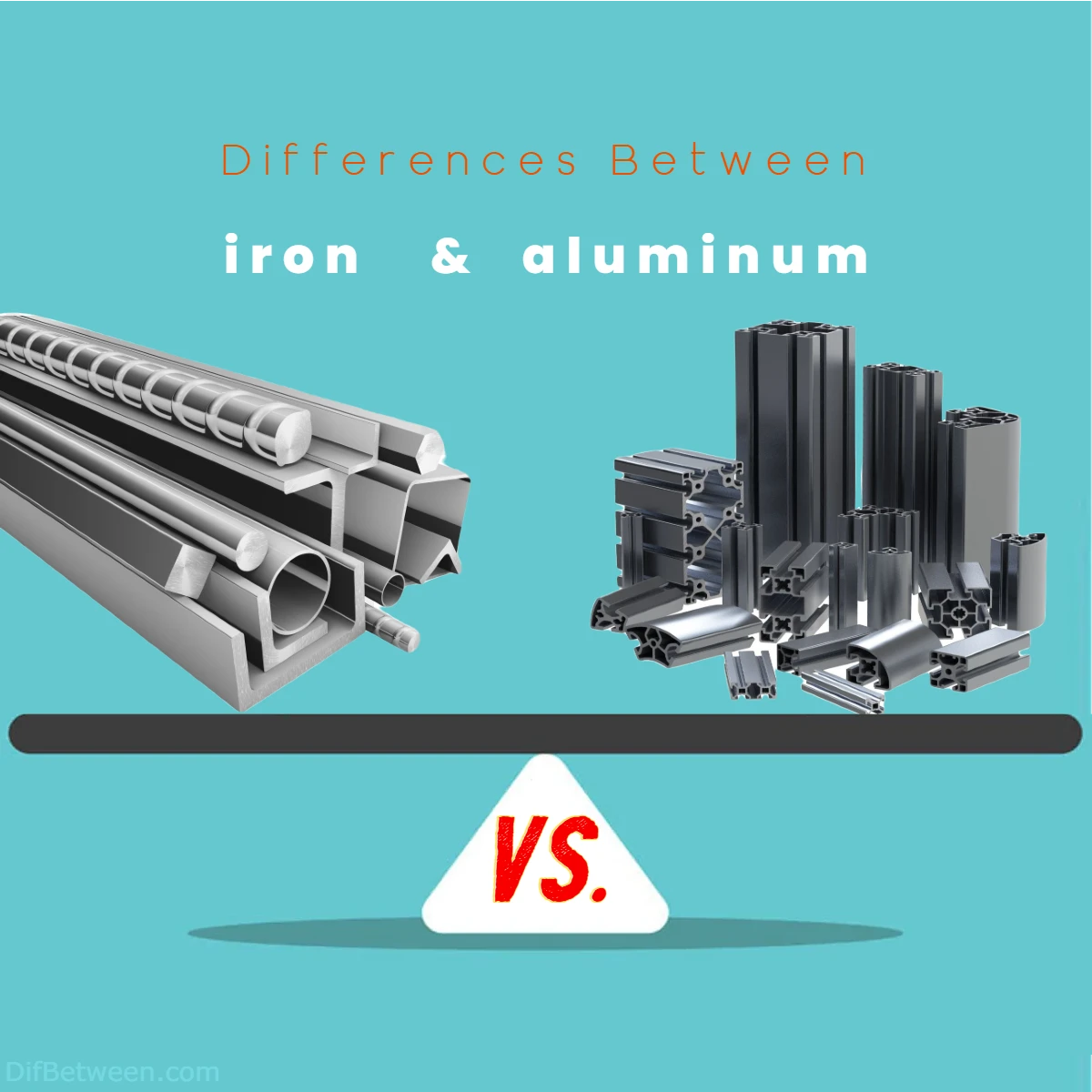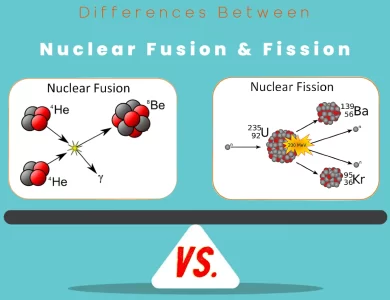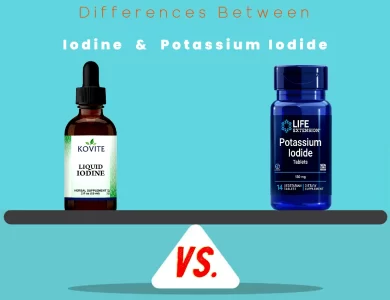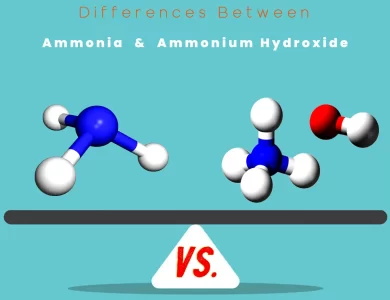
| Property | Iron | Aluminum |
|---|---|---|
| Atomic Number | 26 | 13 |
| Density | 7.87 g/cm³ | 2.70 g/cm³ |
| Melting Point | 1538°C (2800°F) | 660°C (1220°F) |
| Tensile Strength | 370 MPa | 110-570 MPa |
| Magnetic | Yes (when not heated above Curie point) | No |
| Corrosion Resistance | Susceptible to rust and corrosion | Naturally forms oxide layer, resistant to corrosion |
| Strength-to-Weight Ratio | High, especially in steel form | Excellent, advantageous for lightweight applications |
| Recyclability | Highly recyclable | Highly recyclable |
| Environmental Impact | High energy consumption and emissions | Energy-intensive extraction, but energy-efficient recycling |
| Aesthetics | Rustic appeal, historical significance | Modern designs, lightweight versatility |
| Cost | Generally more affordable | Higher upfront cost, offset by weight reduction |
| Applications | Construction, machinery, manufacturing | Aerospace, automotive, architecture, packaging |
you’re about to embark on a journey that uncovers the fascinating contrasts between two remarkable elements that have shaped our lives in more ways than we might realize. With each turn of phrase, we’ll peel back the layers and reveal the distinctive properties that set iron and aluminum apart. So, grab a metaphorical pickaxe and let’s dig into the heart of the matter!
Differences Between Iron and Aluminum
The main differences between iron and aluminum lie in their properties, applications, and characteristics. Iron boasts high tensile strength, magnetic properties, and a density of 7.87 g/cm³, while aluminum has a lower density of 2.70 g/cm³, excellent corrosion resistance due to its oxide layer, and a wide range of applications in aerospace, architecture, and packaging. Iron is often chosen for its durability in construction and machinery, while aluminum’s lightweight versatility makes it ideal for industries seeking weight reduction without sacrificing strength. Understanding these distinctions between iron and aluminum is essential for informed material selection in various projects and industries.
Composition and Properties
Iron: The Stalwart Element
Iron, a chemical element represented by the symbol Fe, is a heavyweight in the metal world. It’s known for its durability and strength, making it a favorite for construction projects and manufacturing machinery. One of the standout features of iron is its magnetic property, which has led to its use in everything from compass needles to electric motors.
In its pure form, iron is relatively soft and ductile, meaning it can be easily shaped and stretched without breaking. However, its true strength comes to the fore when it’s alloyed with carbon to create steel. This alloying process results in a material that’s not only strong but also highly resistant to corrosion, a critical factor in structures built to withstand the test of time.
| Property | Iron |
|---|---|
| Atomic Number | 26 |
| Density | 7.87 g/cm³ |
| Melting Point | 1538°C (2800°F) |
| Tensile Strength | 370 MPa |
| Magnetic | Yes (when not heated above Curie point) |
Aluminum: Lightweight Marvel
In stark contrast to iron, aluminum (Al) is remarkably lightweight. Its low density, combined with its impressive corrosion resistance, has made it a staple in various industries, most notably in aviation and packaging. Despite its feather-light feel, aluminum boasts remarkable strength-to-weight ratio, making it an ideal choice for applications where both durability and reduced mass are desired.
Aluminum doesn’t rest on its mechanical laurels; it also shines in the visual department. The metal forms a thin oxide layer on its surface when exposed to air, giving it a distinct protective layer that prevents further corrosion. This natural shield eliminates the need for additional coatings and treatments, adding to its appeal as a versatile material.
| Property | Aluminum |
|---|---|
| Atomic Number | 13 |
| Density | 2.70 g/cm³ |
| Melting Point | 660°C (1220°F) |
| Tensile Strength | 110-570 MPa |
| Magnetic | No |
Production and Applications
Iron: From Ore to Infrastructure
The process of extracting iron from iron ore is a fascinating one. It starts with the mining of iron ore, which can vary in iron content. The ore is then smelted in blast furnaces, where the intense heat causes impurities to separate from the molten iron. What emerges is pig iron, a brittle but iron-rich product. To transform pig iron into steel, the carbon content must be lowered through various methods like the Bessemer process or the more modern electric arc furnace route.
Steel’s versatility knows no bounds. It forms the backbone of skyscrapers, bridges, and transportation infrastructure. Its malleability allows architects and engineers to design structures that push the boundaries of innovation. Moreover, the ability to create various steel alloys with unique properties has opened doors to industries ranging from automotive manufacturing to surgical instrument production.
Aluminum: Abundant and Adaptable
Aluminum doesn’t exist in nature as a pure metal; instead, it’s found in minerals called bauxites. The extraction of aluminum from bauxites requires a process called the Bayer process, involving crushing the bauxite and then refining it through various steps to obtain alumina (aluminum oxide). The Hall-Héroult process, an electrochemical method, is then employed to convert alumina into aluminum through electrolysis.
The lightweight nature and resistance to corrosion make aluminum an indispensable material in the aerospace industry. It’s used in the construction of aircraft frames, reducing overall weight and fuel consumption. The packaging industry also relies heavily on aluminum due to its malleability, which allows for the creation of various shapes for cans and containers. In recent years, aluminum’s aesthetic appeal has led to its increased use in architectural projects, adding a modern touch to buildings.
Strength and Durability
Iron: Strong Foundation
Iron’s inherent strength has been harnessed for centuries, shaping the course of human history. Its use in construction and machinery can be attributed to its robustness and load-bearing capacity. However, iron’s Achilles’ heel lies in its susceptibility to rust, a process where iron reacts with oxygen and moisture to form iron oxide. This corrosion weakens the metal over time, necessitating protective coatings or the use of stainless steel in corrosive environments.
Aluminum: Light Yet Resilient
Aluminum’s strength surprises many, given its lightweight nature. It’s particularly resistant to corrosion due to the protective oxide layer that forms on its surface. This layer acts as a barrier, preventing further interaction with the surrounding environment. This characteristic is especially advantageous in maritime settings, where saltwater could wreak havoc on other metals.
While aluminum doesn’t match the sheer strength of steel, its excellent strength-to-weight ratio makes it a go-to choice in industries where weight savings are paramount. It’s a key player in the transportation sector, contributing to fuel efficiency in automobiles and increased payload capacity in aircraft.
Conductivity and Uses
Iron: Magnetic Attraction and Beyond
Iron’s magnetic properties are put to good use in various applications, such as electromagnets, transformers, and generators. Its ability to be magnetized and demagnetized easily is crucial for these functions. Iron’s conductivity, while not as high as that of some other metals like copper, still allows it to conduct electricity effectively. This property is exploited in electrical wiring and power transmission systems.
Aluminum: Electrical Excellence
Aluminum’s conductivity is nothing short of impressive. In fact, it boasts around 61% of the conductivity of copper while being significantly lighter. This makes aluminum an economical choice for high-voltage power transmission lines, where weight plays a role in overall structural integrity. Its electrical conductivity also finds use in electronics, particularly heat sinks and conductors.
Sustainability and Recyclability
Iron: Endlessly Recyclable
Iron is a star when it comes to recycling. It’s one of the most recycled metals on the planet, with a well-established infrastructure for collecting and repurposing iron and steel products. The recycling process involves melting down scrap iron and steel, which can then be used to manufacture new products. This significantly reduces the energy and resource requirements compared to producing iron from raw materials.
Aluminum: Energy-Efficient Recycling
Aluminum’s recyclability is equally impressive. Recycling aluminum requires just a fraction of the energy needed to produce aluminum from bauxite ore. This makes recycling an economically and environmentally sensible choice. Aluminum recycling involves melting the metal, and the resulting recycled aluminum can be used in applications ranging from beverage cans to automotive parts.
Comparing Environmental Impact
Iron: Managing Rust and Emissions
While iron is abundant and crucial for many industries, its environmental impact is not without concerns. One of the primary issues is rust, which not only weakens iron structures but also has an ecological footprint. The process of corrosion involves the oxidation of iron, which requires oxygen and water. This can contribute to the deterioration of infrastructure and requires constant maintenance and repair.
Additionally, the production of iron and steel involves high energy consumption and significant emissions, including carbon dioxide (CO2). Traditional methods, such as the blast furnace, release substantial amounts of CO2, contributing to the greenhouse effect and climate change. Efforts to mitigate these impacts include adopting cleaner technologies and more sustainable practices in the iron and steel industry.
Aluminum: Energy-Intensive Extraction
Aluminum’s environmental profile also warrants scrutiny. The extraction of aluminum from bauxite requires a substantial amount of energy, contributing to high greenhouse gas emissions. The energy-intensive Hall-Héroult process, used to convert alumina into aluminum, relies on large amounts of electricity. This energy consumption is a significant factor in aluminum’s overall carbon footprint.
On the positive side, aluminum’s recyclability offsets some of its environmental drawbacks. Recycling aluminum saves up to 95% of the energy required to produce it from raw materials. This plays a pivotal role in reducing emissions and conserving resources. As the push for sustainable practices gains momentum, the aluminum industry is exploring cleaner energy sources and more efficient extraction methods.
Aesthetics and Applications
Iron: Timeless Charm and Rustic Appeal
Iron’s aesthetic charm lies in its rustic and vintage appeal. Wrought iron, with its intricate patterns and durability, has been a favorite in architectural design for centuries. From ornate gates to elegant railings, iron adds a touch of old-world elegance to both residential and commercial spaces. The patina that develops over time due to rust can enhance the visual appeal of iron structures, giving them a story to tell.
Aluminum: Modern Elegance and Versatility
Aluminum’s aesthetic versatility is a more recent development. Its lightweight nature allows for innovative designs in modern architecture. The material can be molded into sleek, futuristic shapes that complement contemporary buildings. The oxide layer that forms on aluminum’s surface also provides a range of opportunities for color and texture, further expanding its aesthetic potential.
Pricing and Affordability
Iron: Cost-Effective and Widely Available
Iron’s abundance makes it an economically viable choice for various applications. It’s relatively affordable due to its widespread availability. This cost-effectiveness contributes to its popularity in construction projects, where large quantities of materials are required. However, the need for corrosion protection measures, particularly in humid or corrosive environments, can add to the overall expenses over the long term.
Aluminum: Higher Costs, Lower Weight
Aluminum’s higher cost compared to iron is mainly due to the energy-intensive extraction and refining processes. Its lightweight nature offsets this cost to some extent, as less material is needed to achieve the same structural integrity. In industries where weight reduction is critical, such as aerospace and automotive manufacturing, the benefits of aluminum’s reduced mass often outweigh the higher upfront costs.
Iron or Aluminum: Which One is Right Choose for You?
When it comes to selecting the right metal for your project or application, the choice between iron and aluminum can have a significant impact. Each metal comes with its own set of advantages and considerations. Let’s delve deeper into the factors that might influence your decision.
Strength and Weight Requirements
Iron: If your project requires exceptional strength and load-bearing capacity, iron or steel might be the way to go. Steel structures are known for their durability and ability to withstand heavy loads, making them suitable for bridges, high-rise buildings, and industrial machinery.
Aluminum: On the other hand, if weight reduction is a priority without compromising strength, aluminum is your ally. Aircraft, lightweight automotive parts, and products requiring easy handling often benefit from aluminum’s impressive strength-to-weight ratio.
Corrosion Resistance
Iron: Iron’s Achilles’ heel is its vulnerability to rust and corrosion. If your project will be exposed to moisture or harsh environmental conditions, consider the additional costs and efforts required for corrosion protection, such as coatings or stainless steel options.
Aluminum: Aluminum’s natural oxide layer grants it superior corrosion resistance, particularly in marine or humid environments. This property makes aluminum an attractive choice for outdoor structures and applications where exposure to moisture is inevitable.
Aesthetics and Design
Iron: For projects seeking a timeless, rustic, or ornate appearance, iron’s aesthetic appeal shines through. Wrought iron’s intricate designs can add a touch of elegance and history to architecture and interior spaces.
Aluminum: If modern and sleek designs are on your agenda, aluminum’s lightweight and malleable nature allows for innovative and contemporary shapes. The oxide layer’s potential for varied textures and colors can also add a unique visual dimension.
Cost Considerations
Iron: Iron is generally more affordable due to its abundance and widespread use. However, keep in mind the potential long-term costs associated with corrosion prevention and maintenance, especially in challenging environments.
Aluminum: While aluminum comes with a higher upfront cost, its reduced weight can offset this expense, especially in industries where weight reduction leads to cost savings, such as aviation and transportation.
Environmental Impact
Iron: Iron’s production processes often result in higher energy consumption and emissions, contributing to environmental concerns. Efforts to reduce its impact include adopting cleaner technologies and sustainable practices.
Aluminum: Aluminum’s energy-intensive extraction is a significant environmental consideration. However, its recyclability plays a crucial role in mitigating its carbon footprint. If sustainability is a priority, the energy-efficient recycling process can be a decisive factor.
Making the Choice
Ultimately, the decision between iron and aluminum depends on your project’s specific requirements and priorities. Iron’s strength and time-tested durability might be the right fit for a large-scale construction endeavor, while aluminum’s lightweight versatility could be a game-changer in the aerospace industry.
Consider the factors that matter most to your project: Do you prioritize strength, weight reduction, corrosion resistance, aesthetics, or sustainability? By aligning your needs with the unique properties of each metal, you can make an informed decision that sets your project up for success. Whether you opt for the classic charm of iron or the modern elegance of aluminum, you’re sure to create something remarkable.
FAQs
The primary differences between iron and aluminum encompass their properties, applications, and characteristics. Iron is heavier with a density of 7.87 g/cm³, exhibits magnetic properties, and is frequently used for its strength in construction and machinery. On the other hand, aluminum has a lower density of 2.70 g/cm³, features a protective oxide layer for corrosion resistance, and finds its niche in lightweight applications like aerospace, architecture, and packaging.
Iron tends to be stronger than aluminum in terms of tensile strength. Iron’s tensile strength measures around 370 MPa, making it well-suited for heavy-duty applications. While aluminum’s tensile strength ranges from 110 to 570 MPa, it’s known for its impressive strength-to-weight ratio, making it suitable for projects that require reduced mass without compromising durability.
Yes, aluminum exhibits superior corrosion resistance compared to iron. Aluminum naturally forms a protective oxide layer on its surface, which shields it from further corrosion. Iron, however, is susceptible to rust and requires protective coatings to prevent deterioration when exposed to moisture and oxygen.
Iron, specifically in the form of steel, is a common choice in construction due to its strength and load-bearing capabilities. Steel structures, such as skyscrapers and bridges, rely on iron’s durability. Aluminum, while not as common in construction, is gaining popularity for its lightweight properties and aesthetic appeal in architectural designs.
Yes, aluminum is highly recyclable, much like iron. In fact, aluminum’s recyclability is particularly notable, as recycling it requires significantly less energy compared to its initial extraction from bauxite ore. This makes aluminum an environmentally friendly choice and contributes to resource conservation.
Aluminum’s lightweight nature is advantageous in industries where weight reduction is crucial. The aerospace industry benefits from aluminum’s ability to reduce aircraft weight, leading to improved fuel efficiency. Additionally, automotive manufacturing, packaging, and even architecture use aluminum to achieve both strength and lower overall mass.
Iron tends to be more cost-effective compared to aluminum due to its widespread availability and relatively lower production costs. However, aluminum’s reduced weight can offset its higher initial cost, making it economically viable in industries where weight reduction leads to operational savings.
Yes, aluminum’s corrosion resistance makes it well-suited for environments with high moisture levels. The natural oxide layer that forms on aluminum’s surface provides protection against corrosion, making it a preferred choice for applications exposed to water and humidity.
Read More:
Contents






